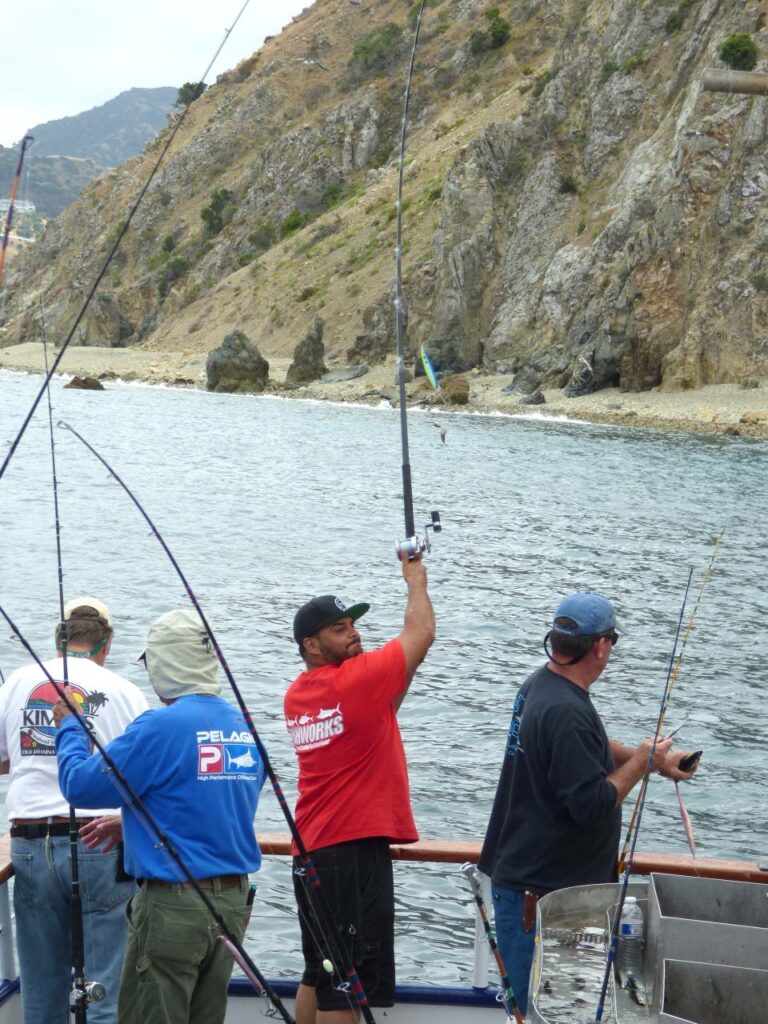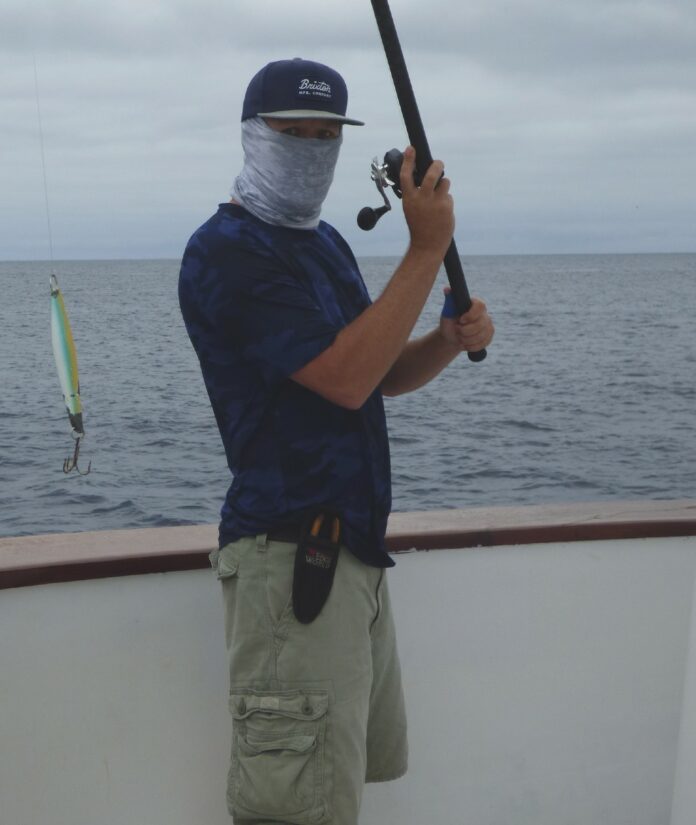BY LARRY BROWN
Casting and bait selection are the two skills that most distinguish the 20% of anglers who catch 80% of the fish from the 80% of the anglers who catch 20% of the fish on a sport boat. Here are five key tips to improve your casting, and your catching.
1-PRACTICE
OK, answer honestly. How many of you go to your local park, pond or street and practice casting? I ask that question frequently and know the answer is close to zero. If you’ve been fishing for a long time, your brain, arms and shoulders are all hard-wired, and if you don’t have the optimum dynamics practicing may just be reinforcing bad practices. The next time you are on a fishing boat, ask one of the crew members for a lesson and ask him to watch you closely to make sure you are doing what he is trying to show you. Then go to the bow and give it a whirl. When you get home, practice often at your local park or pond after the fishing trip and monthly thereafter until you are in the top 20%. Learn how to cast a live bait and a jig – it is different.
2-BODY POSITION AND MOTION
Body position and motion are about the same for casting live baits and jigs. The biggest difference for bait and jigs, is g- force. Bait will command a lofty gentle cast, while jigs will require “loading” up the rod and forcibly launching your missile. Position your body against the rail. Assuming you are right-handed, lean your left hip against the rail. You want to create a swinging “arc” with your bait or jig. I hold my rod vertically on my right side with the bait or jig at the same height as my reel. As you drop your rod backward, away from the rail and water, your bait or jig will begin a wide circular arc. For a 7-foot rod you will have about 5 feet of line out of your tip guide so the radius of your arc will be the length of your rod plus 5 or 12 feet for a 7-foot rod. It will be 14 feet for an 8-foot rod. You will see the importance of this in the next two sections.
3-LIVE BAIT
For live bait, your goal is to cast 20 to 30 feet away from the boat. This delivers your bait into the zone where the chum is landing in the water and/or into the current so your bait doesn’t swim back to hide under the safety of the hull. You also want the bait to be launched gently and land gently on the water. Choosing a super lively bait (strong, perfect health, firm and slimy to the touch, light in color, no lost scales, no bloody nose or bloody eyes) is critical, and you don’t want to compromise it by mishandling it with a death grip, dry hands, inserting the hook too deeply, or jerking the life out of it with a bumpy cast or stunning it when he splashing down with a line drive thump into the water. Nice and easy does it. Watch a crew member cast or ask him to show you how. With that nice and easy arc launch it at about 12 o’clock and follow through ending your motion at about 9 o’clock.
Watch a crew member or one of the better anglers do a stern corner underhand cast, which can also get your bait gently launched into the chum zone where the bites frequently come instantly.
4- JIGS
Casting a jig is much different. A jig doesn’t mind being abused or mistreated by a forceful

launch or a hard smack down 70 yards away from the boat. Step up to the rail; lean left hip on the rail. Casting from the second row or bleacher seats is very dangerous, especially on a rocking boat. I use an 8-foot rod to throw jigs and bombs, so my arc will be 14 feet. The bigger the arc or the radius of the arc means greater jig speed at launch. Your right hand holding the rod at the base of the reel is your center of the arc and fulcrum point.
Tip your rod straight backward to begin your arc and when your jig falls to about 3 o’clock, press quickly and firmly down with your left hand on the very butt of the rod. Picture your rod as a lever or seesaw and your right hand as the fulcrum. Your goal is to maximize the speed of the jig being hurled in its arc before you launch it at 12 o’clock and follow through to 9 o’clock. Obviously, the speed at launch and the distance will be greater with a longer rod and line out from the tip, which is why a longer rod can generate a longer cast, IF AND WHEN THE CAST IS DONE CORRECTLY. A long rod in the hands of someone not following this protocol may even be more cumbersome and anti-productive and result in less distance. Take the hooks off your jig, go to the local park and practice, practice, practice.
5-SAFETY
A good angler with good casting skills does NOT cause accidents. Good casting skills incorporate all safety precautions not just the skills to achieve distance, accuracy and care for the bait. Please don’t be delusional and think you are good at casting if you do not incorporate every safety protocol. Don’t think your 30-plus years of fishing automatically means you are good at casting or you are exempt from the safety protocols. Sharp hooks, rocking boats and unaware or careless anglers are a very dangerous combination. If everybody follows the safe casting practices, we can avoid serious injuries. If one angler hooks another, it may end the trip for all of us.
So, when casting, please ALWAYS:
A. Hip against the rail. No second-row casting.
B. Look around deliberately to assure a crew member or fellow angler is not in or walking towards the path your hook or jig will be launched.
C. Give a LOUD call out; “casting,” “low bridge,” “going out” or “watch your ear lobes” before you start your cast.
D. Make sure your shout has been heard and acknowledged by anglers or crew members immediately in or approaching your casting radius.
E. Never take your eyes off your jig or hooked bait. This means your head will be facing backwards, AWAY FROM THE WATER, until the jig or bait has passed over the rail. You will never miss the water.
The photo on the bottom right of this page is to impress on all of us that the worst does happen, but this particular accident is avoidable. Make a commitment to being safe on deck.



